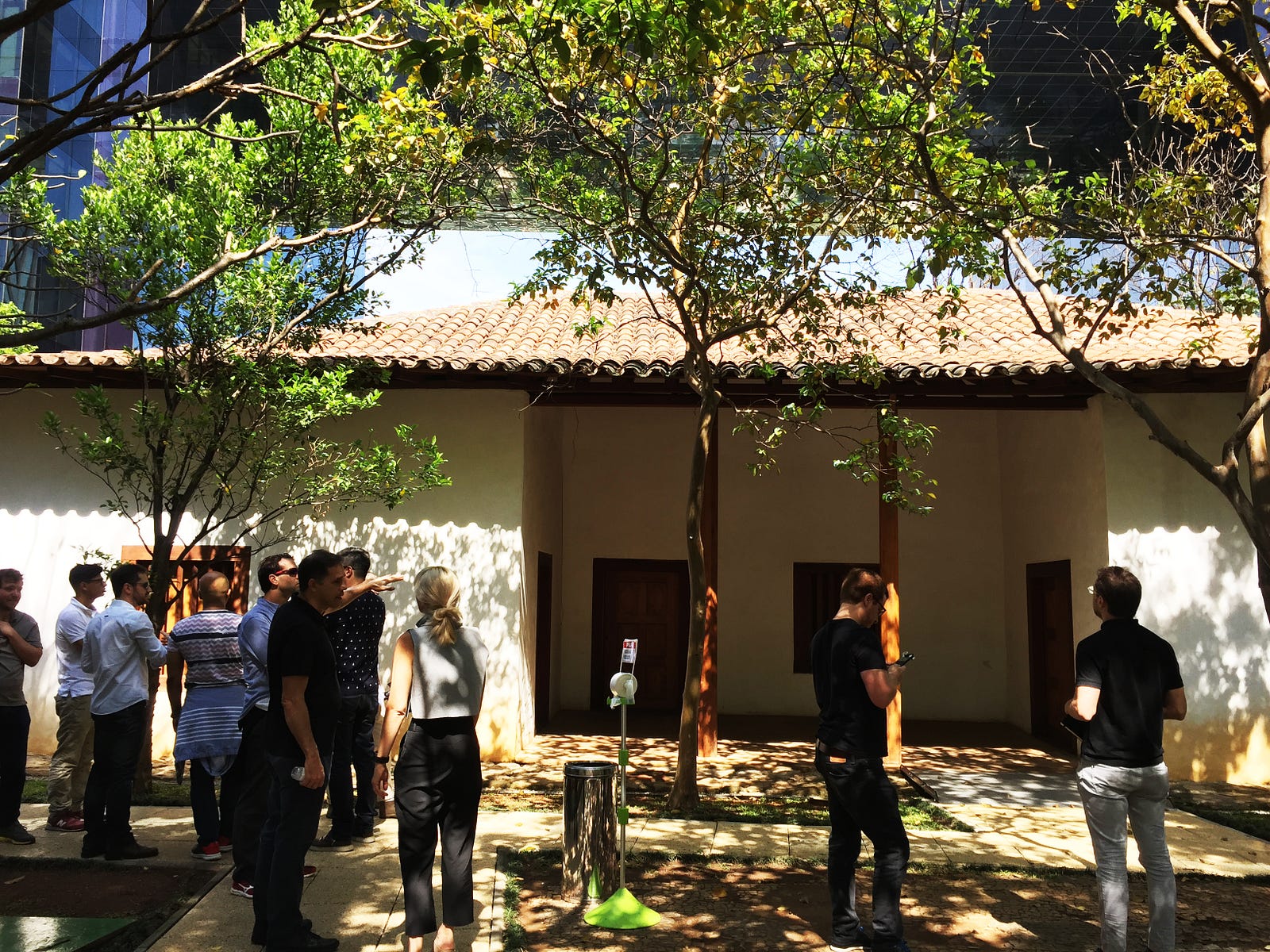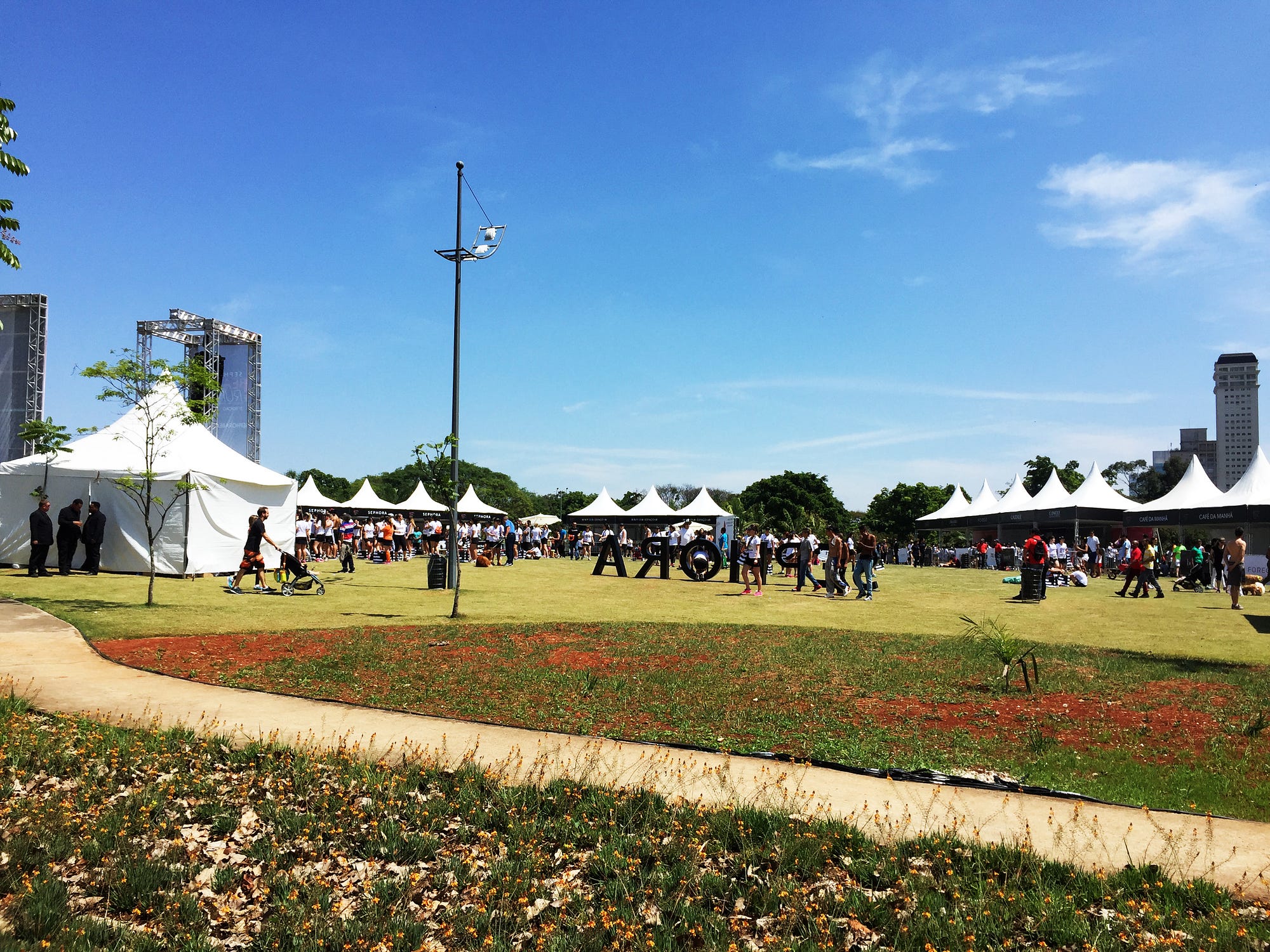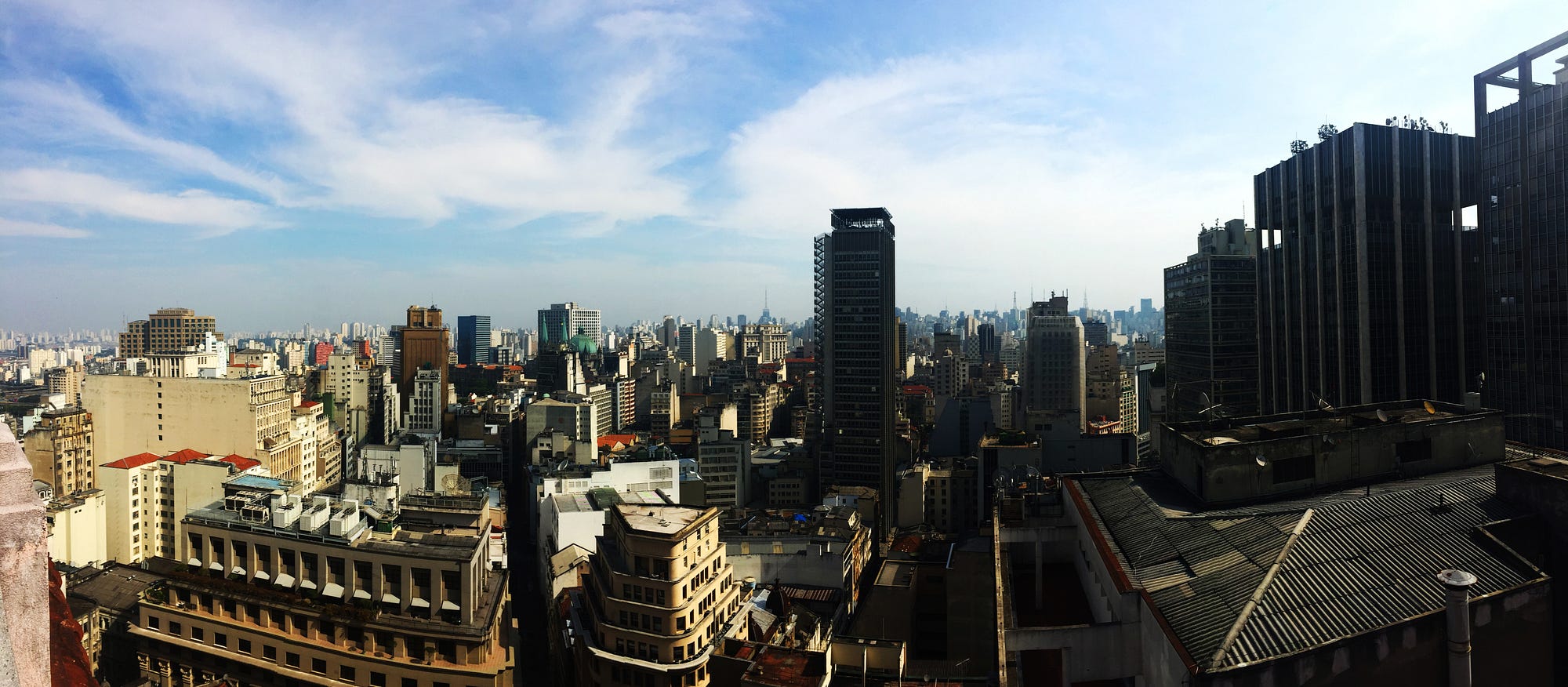Last day. I woke up with that “already?” feeling. Definitely, anxiety ruled the day. This last morning was reserved to explore some of the urban transformations São Paulo is going through. Marcelo Ignatios, from SP Urbanismo, gave up his holiday to kindly share the interventions they planned with the Mayor Fernando Haddad during his past mandate. This was very challenging for me. My life before the Institute of Design was intensively dedicated to urban design and sustainable development. Aside from some architecture projects, my major interests were always focused on urban interventions. With that said, seeing what they have done in the city, and the principles behind their actions, it gave me a lot of hope.
First, we went to Faria Lima. Marcelo explained the avenue’s significance and the challenges the organization faced when planning the next steps of the project’s implementation. He also talked about the specific legislation that was created along different phases of the project and the role of the private sector in creating and contributing to public spaces.
We were lucky to see a couple of different places that were part of the same project. This gave us a better perspective about the variety of challenges that an urban intervention has to overcome when facing such complexity. We observed a discrepancy among the emerging consequences of the interventions. Because different mayors implemented them, mandates had different processes of negotiation, and the results were evident as we were walking through them. We could see where the partnerships were successful and where there was still opportunity to improve.

Challenges went from the combination between historical sites and contemporary needs, to redesign ill-disposed existing infrastructures, from new zoning regulations to human-centric design in an urban scale. It was extremely important to see how the trends we had been talking about the past two days were manifested in the physical space of a global city like São Paulo.

From Faria Lima, we stopped by Parque do Povo (People’s Park), a successful result of great partnership between public and private sector. While we were there, we could see the park intensively occupied. As we were walking through, we felt like we were somewhere else, other than São Paulo. This was an experience that gave us a different atmosphere and perception of the city.
After a coconut water, we got in the bus and stopped at Largo da Batata. Yesterday we were here with the focus on Dr.Consulta. Today, we learned why Dr.Consulta was located in that area and the urban challenges the region is facing. Even though is located in a very strategic place in town, the Largo is a great example of failure in partnership between public and private sector. Not only during negotiation, but also during implementation. Unfortunately, the city suffers from the corruption behind the entire processes. What we see today is a huge empty slot that is fighting for qualitative interventions towards a more human-centered design to support the occupation of this incredible public space.

After the Largo, went straight to Paulista Avenue. As mentioned before, it was a holiday. Therefore, the entire avenue was closed to cars, buses and motorcycles. This was a new regulation implemented by the Major Fernando Haddad to bring more life to public spaces: every Sunday and on holidays, the avenue is open only for human occupation from 9am to 5pm. Once in the spot, we could see the power and influence that policies have in structuring the way that society interacts, and how they determine values and principles of those interactions.

When only occupied by humans, the avenue becomes a support system for democratic manifestations and interactions. We could see the diversity of public occupation that ranged from young fellows and families, to teenagers and seniors. We saw people on their skateboards, on their bicycles, and on their rollerblades. We saw people running and walking with their dogs, eating and drinking, laughing and crying. Our team was continuously turning 360 degrees trying to capture a holistic view of what was happening. “Be careful, there is a bike coming!”, “Watch out for the ball!”, “Please, after you”, “Thank you”, and many other phrases were constant in every conversation.

From Trianon Park, we crossed the avenue to Masp museum, where we talked about the political significance of the institution and how that museum represented the democratic voice of the people during the dictatorships we had in Brazil. The symbolic open area gave us the right space and time for a moment of reflection. We were between the valley of 9 de Julho and Paulista Avenue. Watching the speed of the cars below us, the human occupation of the avenue was definitely a light at the end of the tunnel.

We then went to Mirante 9 de Julho, another successful intervention that resulted from public and private partnership. When Marcelo talked about the intention to redeem the historical significance of the space, it became even more impressive. Ethical and meaningful interventions, even if very small in comparison to the relative scale of the problem, do make difference.
Time went by so fast, and we were all ready to eat. We went downtown, and set at an amazing traditional restaurant for a great Feijoada with refreshing caipirinhas. We were in the heart of São Paulo, experiencing the roots of the Brazilian gastronomy. By that time, we all brought to the table personal experiences, feelings, desires, and insights. We were having a blast in a very pleasant environment.
We obviously extended our lunch time to the limit. Unfortunately, we had reached the final closing moment, and we could have not found a better place for it. We went up to the roof top of Martinelli building, and got the chance to literally see the big picture of the city. From there, the scale of the challenges changed. Anxiety came along with the understanding of opportunities. At the same time that everything we had seen seemed so powerful, they were so small in comparison to what was in front of our eyes. And all of that represented only part of one city in this huge country.

The major take away I have from this immersion is the notion of the complexity in which innovation is taking place. Innovation is not yet conditioned to sustainable development and this is generating a series of undesirable consequences that are leading to unpredictable impacts. Our major decisions are contributing to even more complexity. Under this systematic context, emerging evidence is constantly proving the lack of capability, methods, and tools to design solutions based on ethical principles that support innovation for sustainable development. As designers, this is a fundamental condition for the field. If we want to contribute with meaningful and democratic solutions, we have to develop tools that support such perspective.
All said, there is still a lot of work to be done. Since this first city of the Strategy World Tour was in my home town, it was a very unique experience for me. I grew up in São Paulo, so coming back with different lens was definitely something new for me. Soon, we will be visiting Mexico City and Bogota. Coincidently, I have lived in both cities, which adds to the excitement of what is yet to come. Just like São Paulo, those two cities are territories where incredible innovation is constantly happening. Both of them have specific context and conditions that lead to novel solutions, and I am already thinking what would be the best way to learn the most from each one of them.